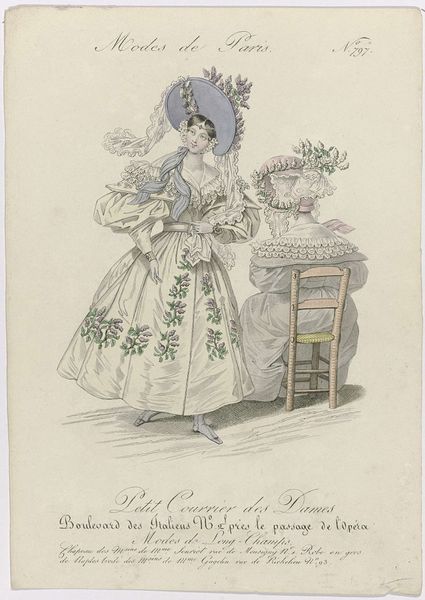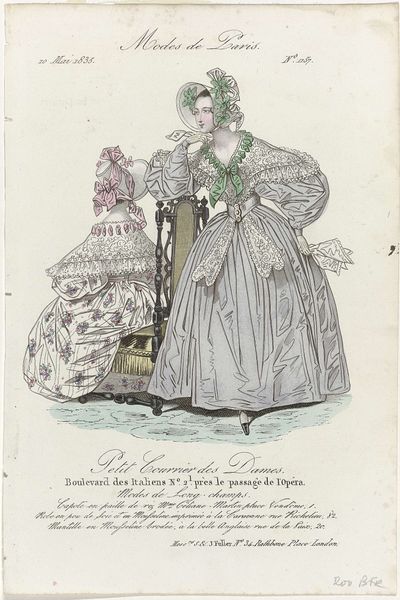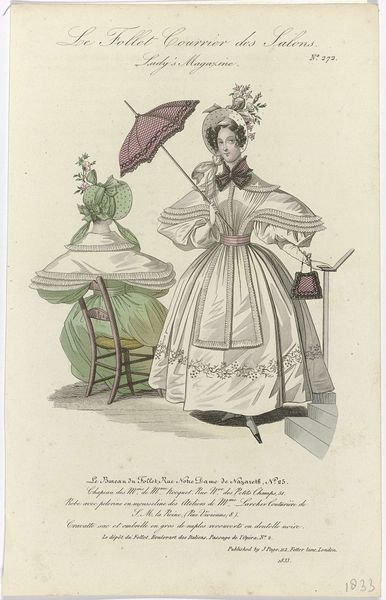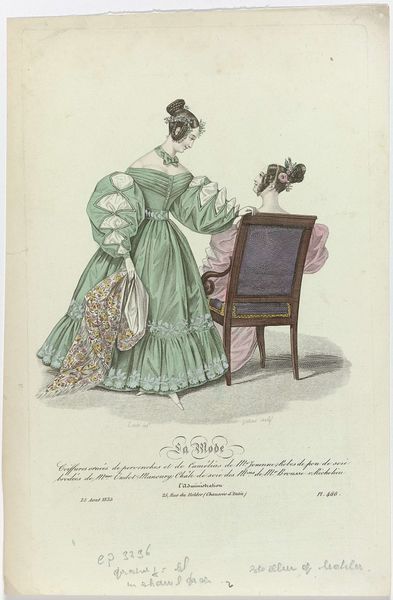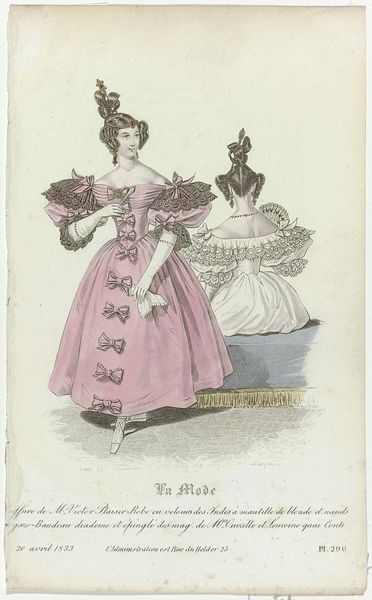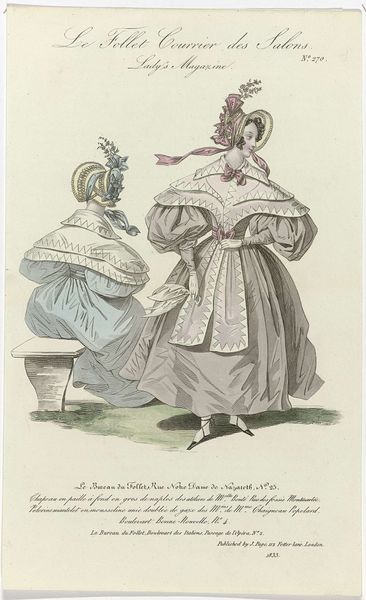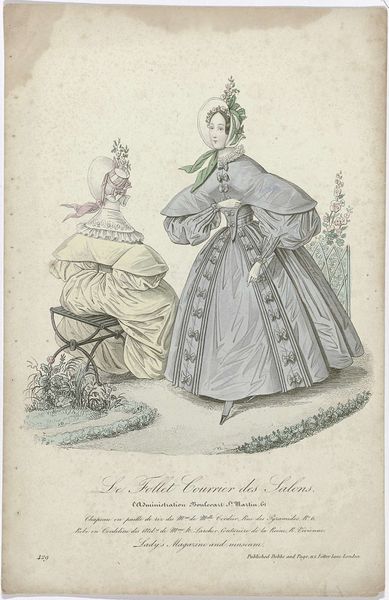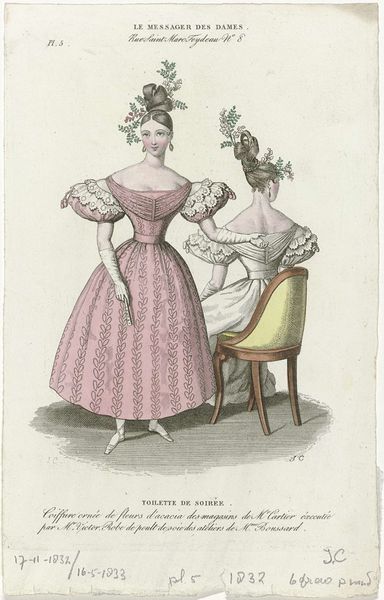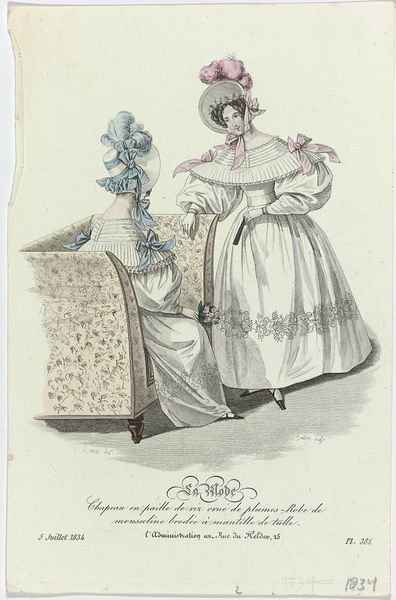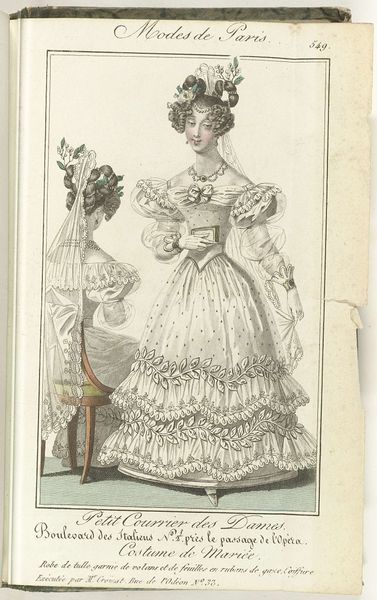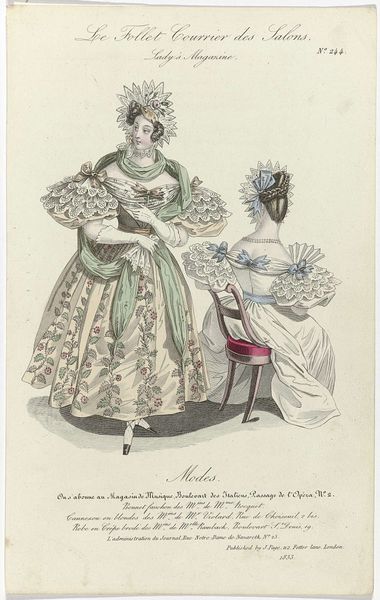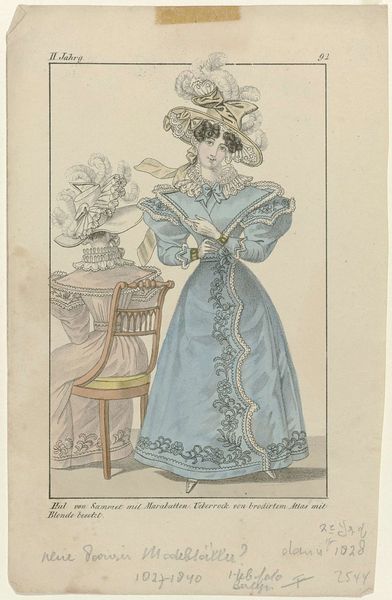
Petit Courrier des Dames, 25 Mai 1835, No. 1161 : Chapeau en paille de Riz (...) 1835
0:00
0:00
# print
#
romanticism
Dimensions: height 225 mm, width 151 mm
Copyright: Rijks Museum: Open Domain
Editor: This is an intriguing print titled "Petit Courrier des Dames," dating back to 1835. It appears to be a fashion plate. The woman's outfit is just so elaborate, but there's also a strange stillness. What do you see in this piece that perhaps I’m missing? Curator: The image resonates deeply with cultural memory, doesn't it? These fashion plates weren't merely about clothing; they were about aspiration and the projection of ideal womanhood. Notice how the rose patterns on the dress echo the idealized Romanticism of the era – a delicate beauty meant to inspire a sense of wistful yearning. But is there something deeper here, beyond mere display? Editor: Perhaps. It feels staged, almost artificial. The woman seems distant, not really connecting with the viewer, more like a mannequin than a real person. Curator: Precisely. Think about the symbols inherent in these garments: the bonnet acting like a frame around her face. The large dress serves as a kind of shield. This kind of apparel signified wealth and belonging. It speaks volumes about societal pressures. Does it evoke the idea of hiding something, rather than expressing freedom or confidence? Editor: Yes, now I see it. It’s like the clothes are a kind of performance, concealing the individual within. Curator: Exactly. These images played a critical role in shaping desires, embedding coded messages. Look closer: these clothes embody constraints and aspirations together. Editor: That’s a new way of looking at fashion plates, as visual codes! Thanks. Curator: My pleasure. Recognizing these repeating elements is key to understanding the language of the image.
Comments
No comments
Be the first to comment and join the conversation on the ultimate creative platform.
